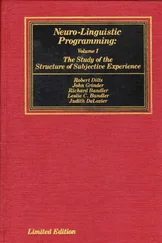The more you do to increase your sensory experience, the more often
you will notice the nonverbal input you are getting from other people that can make a big difference in your communication.
Crystal Ball Gazing Exercise
Now I want half of you to go out of this room and have a coffee break or something. Stay fairly close by, because in a few minutes the people who stay here are going to get you and do something with you ….
For those of you remaining, I'm going to have you learn to become "psychic." I'm going to have you all do some crystal ball gazing, or if you prefer, palm–reading. The point of this exercise is that it's an excellent way to further develop your ability to perceive minimal nonverbal cues. Being able to do this makes all the difference when you're doing hypnosis, and you need systematic ways to develop such perceptual skills.
In a few moments you are going to find one of the people who is now taking a break, and do either crystal ball gazing or palm–reading. You will actually be using the kind of subtle visual or tactile feedback from the other person that you have been using in the last several calibration exercises. Using your newfound "psychic" abilities, you are going to tell him something about his own personal history that you have no way of knowing. You will surprise yourself as well as him.
Choose someone you don't know for a partner, so you won't be able to draw upon stories and unconscious information that you have about that person from the past. I want you to demonstrate to your own satisfaction that you can do this without prior knowledge. Your unconscious mind knows you can, but your conscious mind needs to be convinced of it.
When you first pair up with this person that you don't know, conversationally ask a few mundane questions to get acquainted. Use this time to calibrate to yes and no: agreement and disagreement.
As soon as you've done that, you can begin crystal ball gazing. If you can simply begin congruently, great. If that seems awkward to you, you can say "I think this is a ridiculous exercise, but John and Richard are asking me to do it. I've usually gained from following their instructions, so I'm going to try it. Would you be willing to cooperate?"
Then you say "OK., I'm going to read this crystal ball, and tell you something significant about your past experience." As you say this, you cup your hands in front of you and stare at your hands as if they contain something. Your partner will probably look at your hands too.
As with any exercise, the first thing you need to do is to get rapport.
An excellent way to get rapport is to move the crystal ball that's not there up and down slightly as your partner breathes in and out. At this point you've already done two things with the crystal ball. You've established rapport by pacing the breathing, and you've riveted your partner's conscious attention on something that's not there. That's always a good indication that someone is in an altered state.
Now you begin doing something like the following: "As I look into this cryssal ball … I see the mists swirling . . , and as they swirl, it looks like a figure is emerging … a very important fgure … from your past." Then you pause until you've got your partner's attention focused on the crystal ball, and he has had time to identify "someone important from the past." So far what you're doing is like a process instruction: you are giving no specifics.
Then you say "It looks like a man… ." Now you wait until you can see some indication from your partner that he agrees or disagrees. If you get some minimal cues that indicate "no" — that your partner consciously or unconsciously had already selected a woman—then you say "No, it's a woman! The mists are clearing now!"
Many people will actually shake their heads slightly and indicate very obviously to you whether or not you're following their experience. All you need to do is give your partner time to select a person or experience from his past, and then make statements about that person and watch the response to find out if you're correct or not. If you're not, you very congruently shift what you "report" as if that's what you actually see in the crystal ball.
If I play a game with you, and I place a pea under one of two shells and ask you to guess which one it's under, how many questions do you have to ask to know the answer?
Woman: One question.
Sure. You say "Is it this one?" If the answer is "yes," you know. If the answer is "no," you know it's under the other one.
If I have four shells and one pea, now how many questions do you have to ask to know the answer?
Man: Two.
Right. You only need two, because you can chunk the problem you are going to solve. "Is it under these two?" When you get the answer to that question, your second question is "Which shell out of the remaining two is it under?" If you have eight shells, you need three questions, and so on.
This kind of guessing strategy is very effective for what you are going to do. You can always divide the world into exclusive binary classes. "It's a man./It's a woman." "He's inside./He's outside." "He's older than you./He's younger than you." "He's close to you./He's not very close to you." "He wants to be close to you. / He doesn't want to be close to you." Language allows you to make these absolutely artificial distinctions that divide the world up into binary choices; it's either this or that.
Woman: Do you feed the person both options?
You start by feeding one possiblity. "It looks like a man." You then wait for the response, to find out if your partner accepts or rejects what you say. He might have already selected a man, in which case what you said is congruent with his experience. Alternatively, he may not have made a choice yet, either consciously or unconsciously. When you proposed a man, he may have considered it and accepted it. Or, he could have chosen a woman, but when you waited, he made a substitution and found it acceptable.
The other class of responses your partner might have is to find what you say not acceptable, in which case you simply change. "Oh no, the mists have cleared away now, and I can see that it's a woman."
The whole point of this exercise is for you to give yourself an opportunity to notice that you can use a person's unconscious nonverbal signals to guide you to a description of an experience in that person's life history that you don't know anything about. In his perception of the process, you will have somehow gotten information that you couldn't have gotten in normal ways, and it will seem "psychic."
As soon as you have calibrated to your partner, you can begin with the general category of "an important person." Everybody has an important person somewhere in their life, so that's a good way to get started. Then you can use binary categories. What are some additional binary categories you can use?
Woman: Short/tall.
Man: Happy/unhappy.
Sure. These are all pseudo–categories, but they are categories everybody operates with all the time, "Concerned about you./Not concerned about you." "It's night./It's daytime." I want you each to have a list of at least six binary choices such as these before you begin.
At the end of using these binary categories, you can practice using Ericksonian patterns by doing a process instruction. You could do the whole thing with just Ericksonian patterns. There are plenty of "psychics" who actually do just that. You could say "And that event from your past contains some information, some learning that you hadn't realized was there, … Because the meaning which that event has for you now may be different than the meaning you drew from it , . . at the time. … So that as your unconscious mind makes sense out of your past … in a new way … it doesn't matter if it allows your conscious mind to appreciate that understanding … a lot … or a little… . Your unconscious mind can apply that new understanding … in a meaningful … and surprisingly delightful way … to some experience … that will occur within the next forty–eight hours."
Читать дальше











